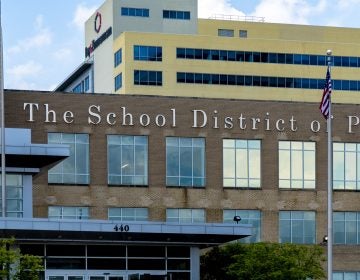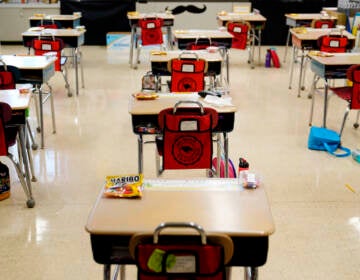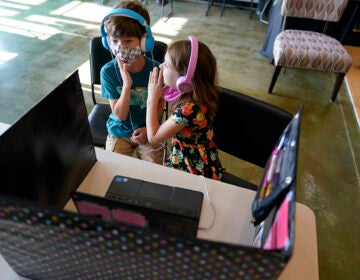Half a million Pa. kids are supposed to be learning to read right now. Are they?
K-3 is a critical time for kids to learn to read. If virtual school disrupts that progress, the consequences could last a lifetime.
Listen 5:12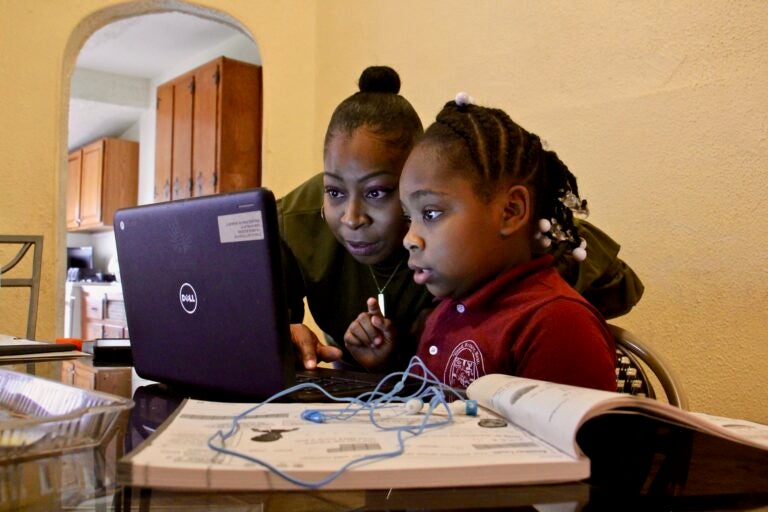
Yolanda Biggers helps her daughter, Zyiah Satterwhite, 7, find her assignment. Zyiah attends second grade virtually from her home in Fairhill. (Emma Lee/WHYY)
North Philadelphia second-grader Zyiah Satterwhite is one of a kind.
The precocious 7-year-old named her Russian Blue cat “Goose.” And while others her age watch children’s shows, Zyiah’s favorite is the hit horror series “Stranger Things” on Netflix. Between giggles, she swears it’s not too scary for her.
Zyiah is also one of about 570,000. That’s the number of Pennsylvania students in grades K-3 — the four-year window where schools expect children to master the basics of reading.
Zyiah’s literacy progress is squarely middle of the pack, according to her mom, Yolanda Biggers. She doesn’t love reading, but she’s at grade level.
“I don’t read a lot,” Zyiah explained. “But a little bit. I like reading a little bit.”
After the coronavirus pandemic hit, Zyiah’s mom gave up her shifts as a part-time nurse to focus all of her attention on Zyiah and her two older sisters. Biggers, 38, turned the dining room of their rowhome into a makeshift classroom — stuffed with every conceivable school supply.
While Zyiah’s dad works long hours as a dollar-store manager, Biggers stays home to help Zyiah log into her classes and stay focused through the virtual school days at Luis Muñoz-Marín Elementary.
“It’s kinda stressful ‘cause I love, like, getting up and stuff,” said Zyiah. “I don’t feel like sitting in a chair and listening.”
Like any second-grader, big words stump Zyiah sometimes. These days, she goes to her mom for help. Biggers reads the word back to her daughter, but that doesn’t feel like a sufficient lesson.
“The skills that the teachers have, as far as phonics, and being able to break words down and showing your kids how to put words together and sound them out — that’s key,” Biggers said. “That’s a learned skill. And that’s something that you have to learn to teach.”
Experts agree. There is a science to reading instruction, a carefully structured method for teaching kids to decode words and match sounds with letter combinations. Most parents don’t know that science.
“I’m confident in my parenting skills,” said Biggers. “But I’m not confident in my educational skills.”
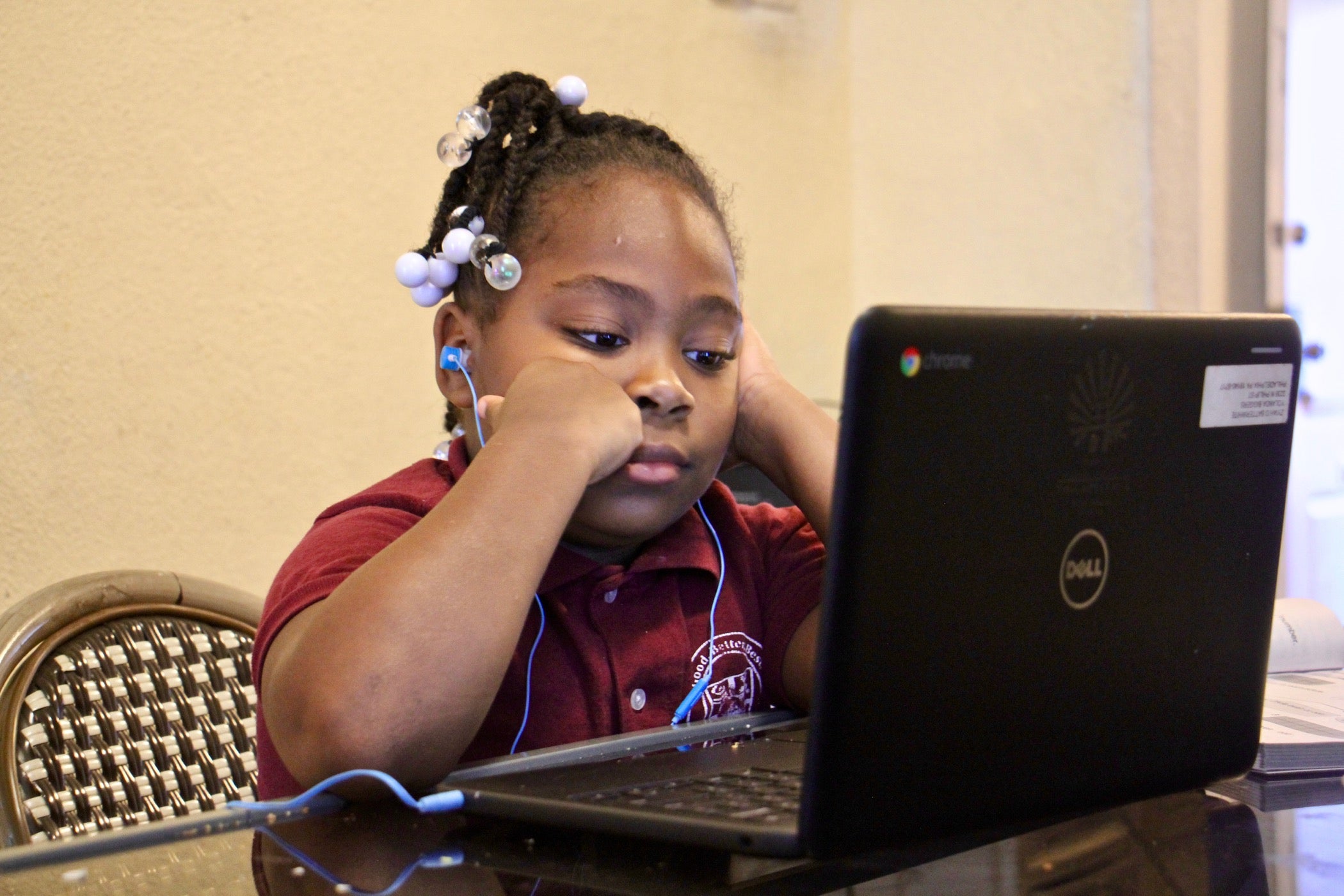
Small gaps now — big gaps later
It’s been more than six months since the coronavirus forced many schools to halt in-person classes.
The immediate consequences of that disruption are obvious. Many parents can’t work. The typical social patterns for school kids have gone kaput.
But what about long-term consequences? What could six months of disrupted education do to a kid six years from now? How about 16?
Experts predict this absence will widen the achievement gap between high- and low-income students. The ripple effects, they warn, could last a lifetime for some children.
A skill like reading helps explain how this unprecedented interruption of face-to-face instruction could cascade through the years and decades to come.
Reading is education’s skeleton key. It opens the door to other subject areas, amplifying a student’s knowledge and confidence across subjects. Kids who struggle with reading often suffer the opposite fate, unable to tackle material they may have otherwise aced because they can’t access it. A child’s third-grade reading level, a prominent study from Hunter College showed, is frighteningly predictive of their chances to graduate high school.
“That is the worst-case scenario we have to be worried about,” said Elizabeth Farruggia, deputy chief of specialized services for Mastery Schools, which runs 24 charters in Philadelphia and Camden. “Every year the gap continues to get larger if we don’t close it.”
Many students in virtual school have already spent about 10% of their total K-3 classroom time learning online. That percentage could conceivably double or triple before kids return to in-person school.
“I think we’re still too early in this to actually know the implications, but they are bound to be huge and multidimensional,” said Jenny Bogoni, who heads Read by 4th, an early literacy campaign overseen by the Free Library of Philadelphia.
The damage done
The first task is determining how badly students regressed in the spring, when American schools abruptly closed their doors and hastily arranged online lessons.
Schools weren’t prepared for the massive disruption. Some districts — like Philadelphia’s — suspended instruction for weeks as they scrambled to acquire laptops, and then offered classes only as review, without consequences for stalled progress.
Shaimaa Mustafa emigrated from Egypt to Northeast Philadelphia with her three daughters in December. By going to school and interacting with other kids, her youngest, third-grader Juamana, started to pick up English quickly. When school closed, she struggled to keep the momentum.
“It was good for the first three months,” said Mustafa, 42, who mostly speaks Arabic at home. “After that, we struggle.”
One widely cited study estimated that in the 2019-20 school year the average child made about two-thirds of the reading gains they would have made in a normal school year. That research — modeled on previous studies on absenteeism and summer vacation — will soon be supplanted by the work of academics who’ve tracked students this year to see if the so-called “COVID slide” is stronger or weaker than feared.
Last school year’s damage is only part of the equation, though.
There’s a lot experts don’t yet know about how effective instruction will be this school year. Huge swaths of students continue to learn online and others are in unusually arranged physical classrooms.
Some researchers think a carefully constructed Zoom lesson can roughly approximate the kind of reading instruction that usually happens in person.
But even well-designed lessons can’t account for a student’s lagging internet connection.
And lesson plans don’t account for the fact that North Philadelphia sixth-grader Karellys Ramos’ parents aren’t native English speakers — meaning sometimes she relies on her two older sisters.
“My sister calls my mom so my mom can help her with the word, even though my mom sometimes doesn’t understand,” said Ililana Irizarry, 16, the eldest sister. “So when my mom doesn’t understand, she calls us.”
And good pedagogy cannot account for the inherent difficulties of making intimate, personal connections in a virtual setting.
“[Reading] is the hardest thing in the world for them under the best of circumstances,” said Angela Marks, who runs Reading Allowed, a nonprofit that matches struggling readers with tutors.
She’s already seen in her practice how tough it can be to coax buy-in from students online — and that’s with the benefit of a one-to-one relationship.
“If they can disengage, they’re going to disengage,” she said. “Because we all disengage from things that are too hard for us.”
‘The whole community pitching in’
Because online instruction — and each child’s access to it — will vary wildly, so too will outcomes.
Some students’ brains are wired in such a way that they’ll learn to decode even if they don’t get huge doses of reading instruction. Others who struggle because of dyslexia or other issues need more direct support. Some of them will manage to get that support over the coming months.
Those are kids like 9-year-old Andrew Knox, a third-grader at Community Partnership School, a private school in North Philadelphia. The school has provided Knox with a reading specialist since first grade — and it’s done wonders for his self-esteem
“He’s doing so much better,” said his mom, Sakora Miller, 29. “But that only comes from a family — the whole community pitching in and working together.”
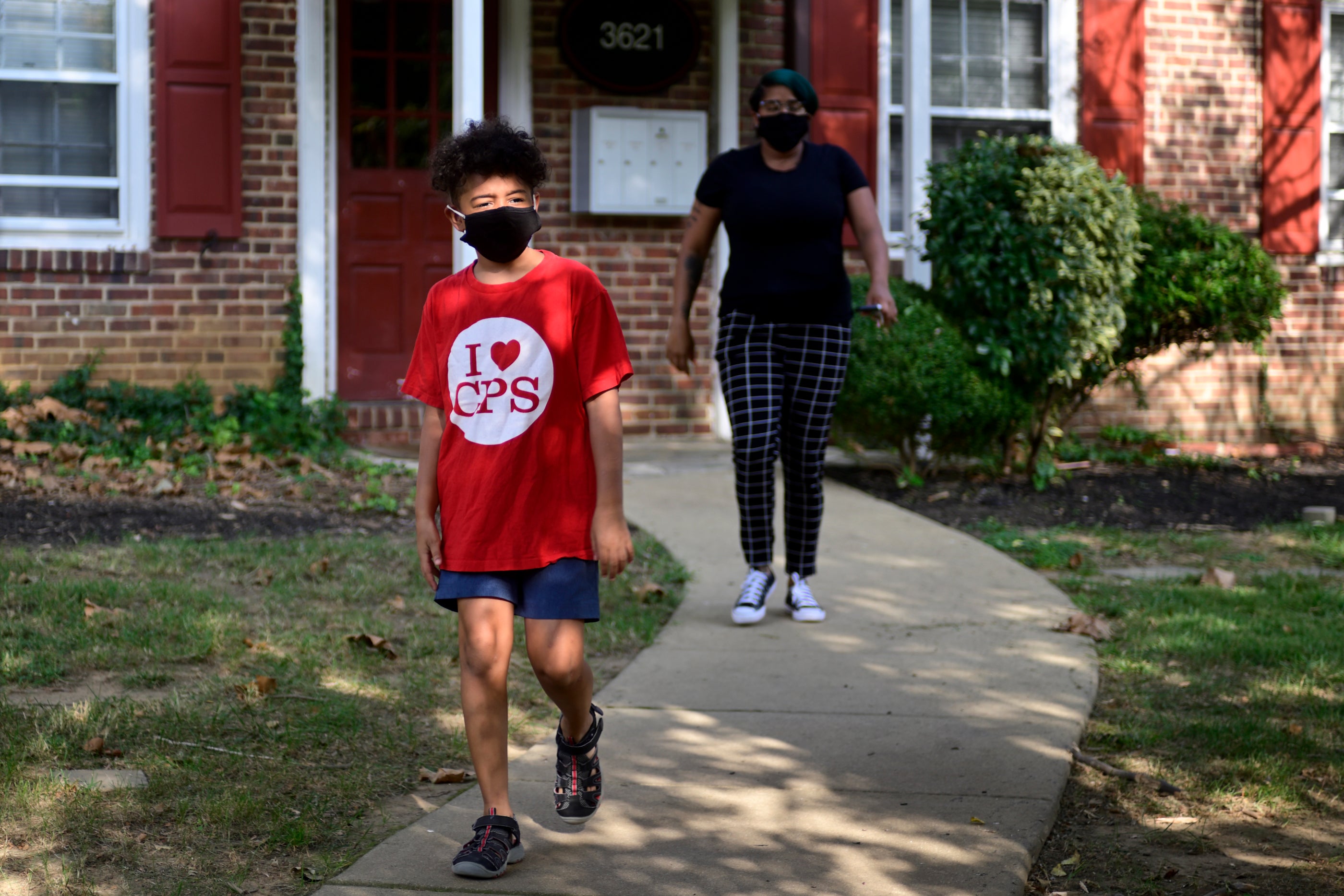
During the pandemic, Knox has continued to meet virtually with a tutor three times a week. His school also offers an in-person option for families, like his, that want it.
Miller says her son is thriving. She thinks it would be a different story if he was in a school with less support.
“He would have got lost,” said Miller. “He wouldn’t love school.”
Experts worry about those lost kids — the students who most need explicit reading instruction, but aren’t getting it right now. Those could be students with a diagnosed learning disability or those who just aren’t the most natural language decoders.
What happens when they return? Will they have the support and care needed to fight through the accumulated deficits? Or will they drift further into academic frustration?
“Some kids are gonna be minimally impacted. Some kids are gonna be hugely impacted,” said Fumiko Hoeft, a researcher who studies reading development at the University of Connecticut and University of California San Francisco. “And the teachers will have to deal with that widened gap when they come back.”
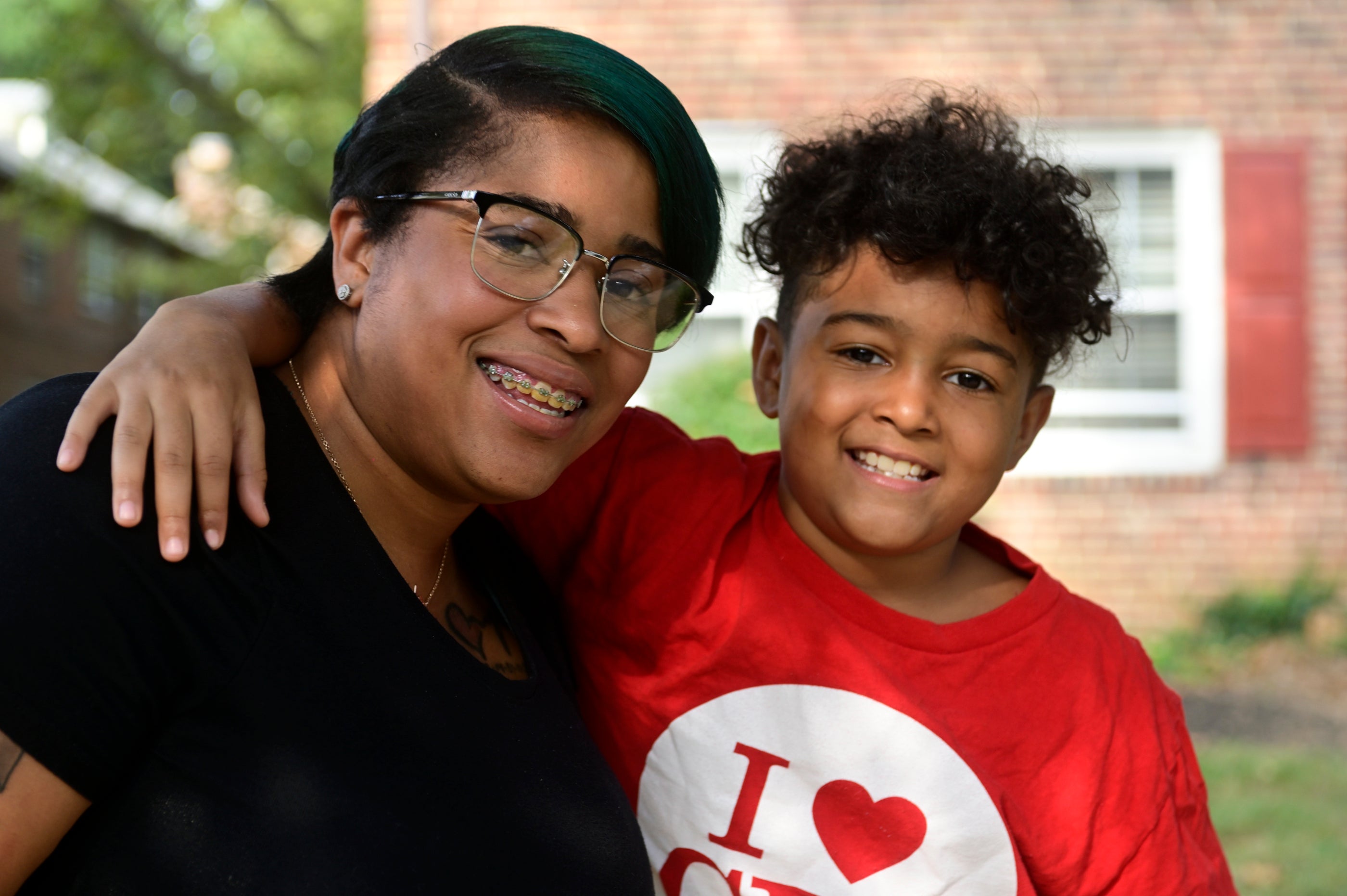
School districts are trying to measure those gaps, but even that task is complicated. The diagnostic tests many schools use are typically administered in-person. That’s required some to use new tests, which produce results that can’t be compared to prior years.
In a typical school year, says Elizabeth Farruggia of Mastery Schools, they’ve found the average student needs about three weeks after summer vacation to return to the reading level they’d reached at the end of the previous year. They’re not quite sure what to expect now.
That’s why Mastery is using a software system that will take student results from a diagnostic exam and generate individualized reading plans for teachers to follow. The more carefully they can pinpoint each student’s reading strengths and weaknesses, the quicker they believe students will regain lost ground.
“We have to extend the amount of time they need to catch back up,” said Farruggia. “But it doesn’t mean they’re not gonna catch back up.”
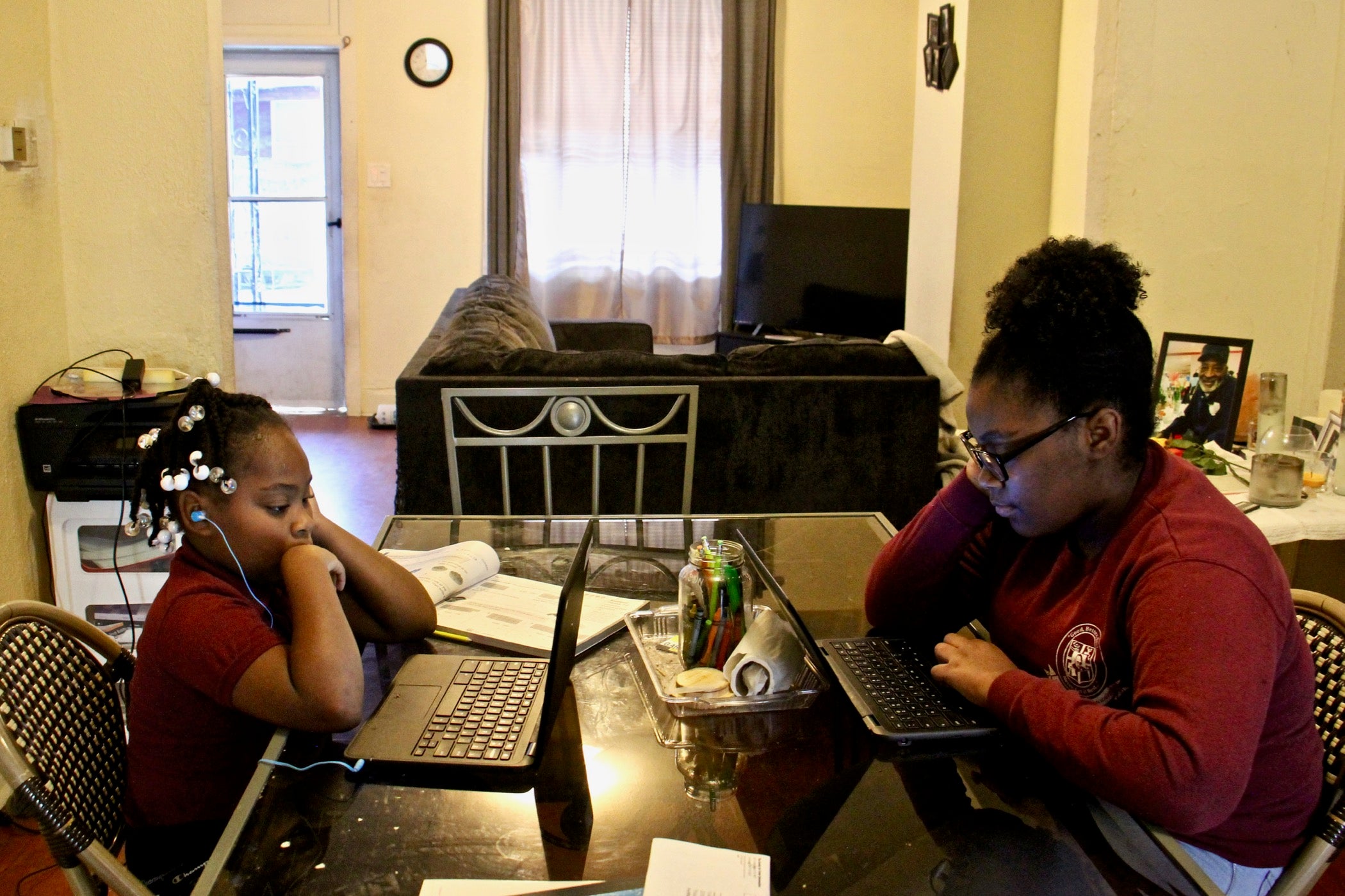
Room for optimism
The silver-lining hope is that COVID will reveal which online reading tools are most useful, paving the way to more options for better instruction when the virus recedes.
And there’s a universe of tools out there. Hoeft, the University of Connecticut researcher, is studying the effectiveness of a digital reading game developed in Finland to see if it can help young children mitigate COVID-related reading loss.
“While [COVID is] creating a divide right now, I’m really hopeful that this will create some good solutions for the future education of our children,” said Hoeft.
There’s also a role for parents. Even if they can’t do some of the more technical reading instruction, parents can help their children build vocabulary and critical background knowledge that feeds reading success.
Shaimaa Mustafa, the recent Egyptian immigrant, recently linked up with a family literacy program that’s helped develop her English proficiency and given her strategies to help her daughter.
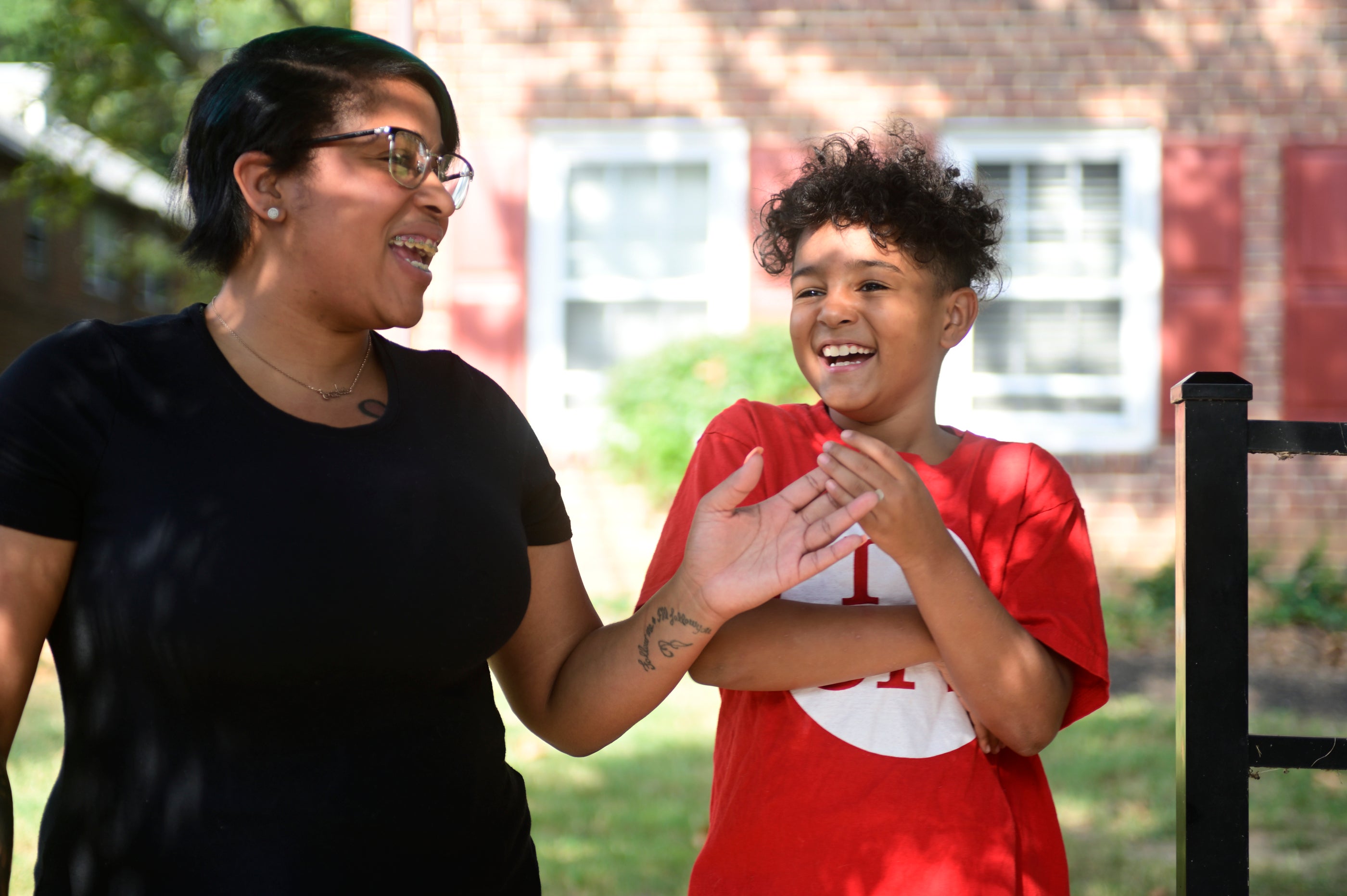
After initially struggling during the COVID shutdown, Jumana made big reading gains, her mom said. She’s gone from reading simple picture books to a 100-page chapter book. The nonprofit also showed Mustafa a website where celebrities read books aloud for children.
“I use it every day before we sleep,” said Mustafa.
This constellation of strategies, experts hope, will prevent catastrophic reading regression among the nation’s youngest learners.
Parents like Yolanda Biggers, Zyiah’s mom, hope it will be enough to keep their kids engaged and on track. Biggers is confident that between Zyiah’s cheerful disposition and the support she’s getting from home, she’ll be able to make up for whatever’s lost this year.
“She’s young enough to adapt,” Biggers said. “Kids are resilient.”
For most students, it may be hard to notice the imprint left by COVID on their reading ability.
“You’re not going to likely have a whole group of kids who can’t read at all,” said Bogoni with Read by 4th. “You’re just going to have kids whose reading skills are less good than they should be.”
What happens when kids read maybe 10% worse than they otherwise would have? It’s an impossible question to answer, but a scary thought.
It’s the kind of thing West Philadelphia mom Sarina Baker, 36, thinks about with her son, Roman — who just started kindergarten.
Roman is a bright kid, but he’s struggling with the basics of letter and sound recognition. Just before the pandemic, Baker got a tutor for Roman through a shelter where they had been living and he started to embrace the challenge of reading.
But when school went online, Baker felt her son’s progress stall.
“This pandemic definitely slowed down the progress that we were making,” said Baker. “Now we’re kinda back to the attitude. He doesn’t wanna do it. We’re working on it for hours.”
As Roman’s enthusiasm drops, so does his mom’s self-esteem.
“It makes me feel like, ‘what am I doing wrong?’” she said.
Baker knows Roman will learn to read. That’s not her fear. Her fear is that he won’t learn quickly enough to thrive in school and unlock his other gifts.
“Now I feel like he’s just gonna [learn] just enough to get by,” she said. “I don’t want that for my child.”
Roman is only 6 years old. He still has his entire academic career ahead of him.
But at least when it comes to reading, the clock is already ticking.
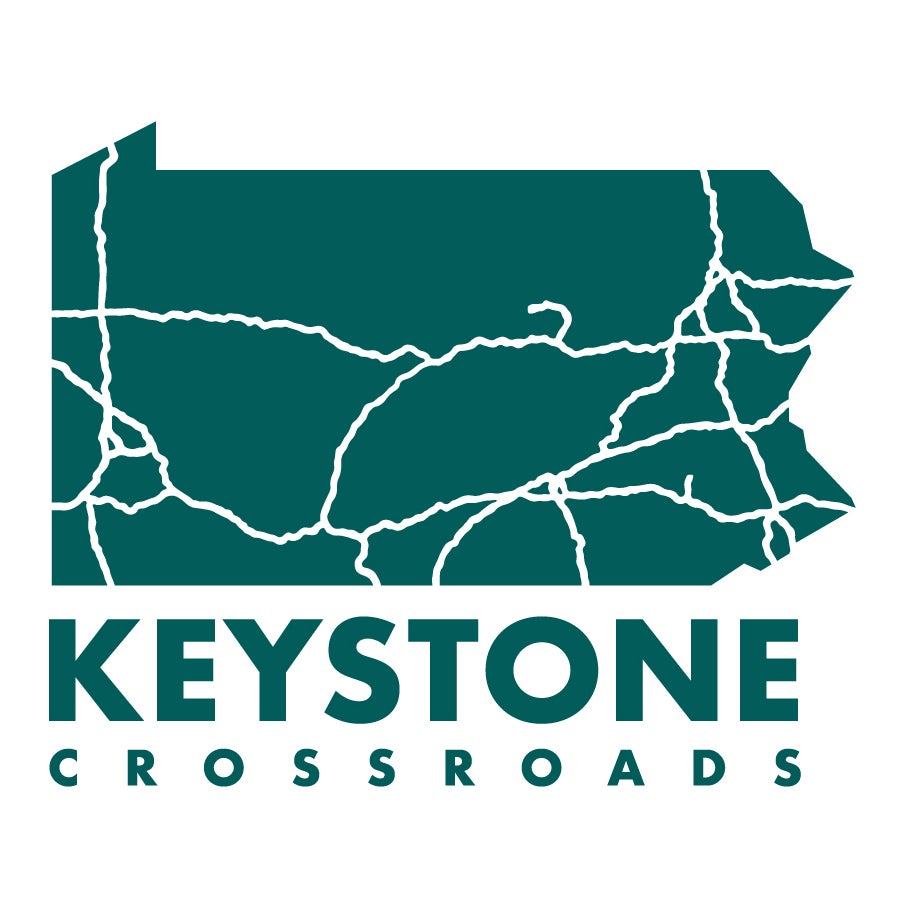
Get more Pennsylvania stories that matter
WHYY is your source for fact-based, in-depth journalism and information. As a nonprofit organization, we rely on financial support from readers like you. Please give today.





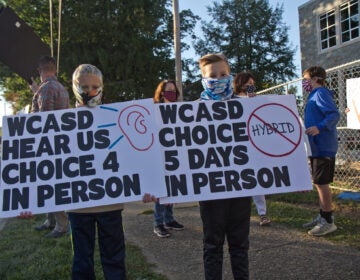
![CoronavirusPandemic_1024x512[1]](https://whyy.org/wp-content/uploads/2020/03/CoronavirusPandemic_1024x5121-300x150.jpg)
